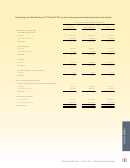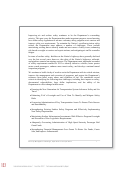Performance And Accountability Report - Fiscal Year 2013 - Federal Aviation Administration - U.s. Department Of Transportation Page 50
ADVERTISEMENT
 1
1  2
2  3
3  4
4  5
5  6
6  7
7  8
8  9
9  10
10  11
11  12
12  13
13  14
14  15
15  16
16  17
17  18
18  19
19  20
20  21
21  22
22  23
23  24
24  25
25  26
26  27
27  28
28  29
29  30
30  31
31  32
32  33
33  34
34  35
35  36
36  37
37  38
38  39
39  40
40  41
41  42
42  43
43  44
44  45
45  46
46  47
47  48
48  49
49  50
50  51
51  52
52  53
53  54
54  55
55  56
56  57
57  58
58  59
59  60
60  61
61  62
62  63
63  64
64  65
65  66
66  67
67  68
68  69
69  70
70  71
71  72
72  73
73  74
74  75
75  76
76  77
77  78
78  79
79  80
80  81
81  82
82  83
83  84
84  85
85  86
86  87
87  88
88  89
89  90
90  91
91  92
92  93
93  94
94  95
95  96
96  97
97  98
98  99
99  100
100  101
101  102
102  103
103  104
104  105
105  106
106  107
107  108
108  109
109  110
110  111
111  112
112  113
113  114
114  115
115  116
116  117
117  118
118  119
119  120
120  121
121  122
122  123
123  124
124  125
125  126
126  127
127  128
128  129
129  130
130  131
131  132
132  133
133  134
134  135
135  136
136  137
137  138
138  139
139  140
140  141
141  142
142  143
143  144
144  145
145  146
146  147
147  148
148  149
149  150
150 We are also advancing the development and implementation
reports, which are used to formulate wildlife mitigation plans
of new technologies to address incursion safety deficiencies.
at the nation’s airports.
For example, smartphones were not widely used just a few
Installing runway status lights at 17 large airports by 2017.
¢
years ago. Today, we are starting to use such devices to help
Installing Engineering Material Arresting Systems (EMAS)
¢
general aviation pilots determine their positions on the airport
at certain certificated airports that do not have standard
surface and file reports concerning wildlife hazards. Electronic
runway safety areas. EMAS materials of closely-controlled
tablets are replacing pilots’ paper charts, offering enhanced
strength and density placed at the ends of runways can stop
situational awareness. Replacing analog voice and paper
or greatly slow any aircraft that may overrun the runway.
reports with digital communication and electronic reporting
systems is revolutionizing our ability to capture and store airport
The agency is committed to mitigating the risks of runway
surface information. Highly capable multilateration systems are
incursions and continuing its ongoing outreach, education,
augmenting information from radar and satellite infrastructure
and awareness programs through mass electronic mail
and providing an array of safety choices for airports. These
communications and training animations. Maintaining the safe
multilateration systems measure the differences in distance
flow of airport traffic constitutes the major runway safety mission
between two or more stations at known locations that broadcast
of the FAA.
signals at known times to provide more accurate depictions of
where objects may be located, such as aircraft or vehicles on the
Serious Runway Incursions Rate
surface of an airport.
Per million operations
Other examples of technology advances to improve safety
include:
0.8
Accelerating and standardizing air traffic facility electronic
¢
0.6
reporting capabilities through the Comprehensive Electronic
Data Analysis Reporting system.
0.4
Creating the ability to baseline, assess, and manage risk in
¢
the terminal area, utilizing Traffic Analysis Review Program
0.2
data and centralized quality assurance protocols.
0.0
FY 2007 FY 2008
FY 2009 FY 2010 FY 2011 FY 2012 FY 2013
Continuing to strengthen the Aviation Safety Information
¢
0.393
0.427
0.227
0.117
0.138
0.356
0.200
Actual
1
and Analysis Sharing program, which fuses subjective and
0.530
0.509
0.472
0.450
0.450
0.395
0.395
Target
objective information contributed by airlines to the FAA,
Target
Achieved?
supplemented by other publicly available data, to produce
1 Preliminary estimate until final result becomes available in January 2014. We do not
comprehensive, graphical depictions of “what happened,”
expect any change in the result to be significant enough to change the year-end
status of achieving the target.
and “why it happened.”
Developing innovative tools to identify and assess risk, for
¢
example, quick response codes for filing real-time wildlife
48
|
|
Federal Aviation Administration
Fiscal Year 2013
Performance and Accountability Report
ADVERTISEMENT
0 votes
Related Articles
Related forms
Related Categories
Parent category: Business









